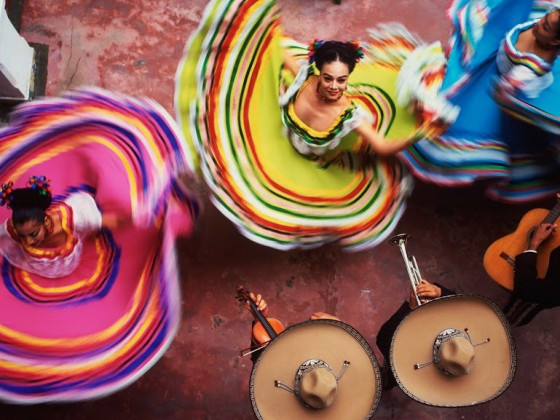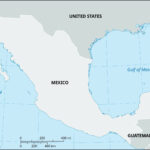Mexico, a land brimming with vibrant culture and rich traditions, expresses its soul through a kaleidoscope of art forms. Among the most captivating is its diverse repertoire of Mexican Dances. These aren’t just steps; they are stories, histories, and the beating heart of a nation expressed through movement, music, and dazzling costumes. From lively festivals to solemn civic events, these dances, often referred to as “Typical Dances of Mexico,” offer a glimpse into the country’s soul.
For generations, dedicated schools, academies, and ballet folklorico groups across Mexico have passionately preserved and practiced these regional dance styles. Each element, from the intricate costumes and hairstyles adorned with braids and flowers to the very manner of performance, has been meticulously passed down, a testament to Mexican pride and cultural continuity. Are you ready to delve into the fascinating world of Mexican dances? Let’s explore some of the most iconic and internationally recognized forms, uncovering the stories behind their steps and attire.
 Folkloric dancers in vibrant costumes
Folkloric dancers in vibrant costumes
1. Jarabe Tapatio: The National Dance of Mexico, Jalisco
Hailing from the spirited state of Jalisco, the Jarabe Tapatío emerged in the late 19th century and has since become a symbol of Mexico worldwide. This exuberant dance, often hailed as the “National Dance of Mexico,” is a joyful spectacle of courtship, traditionally performed to the lively melodies of mariachi music. Dancers energetically stomp and twirl across the stage, their movements embodying a playful flirtation.
Jalisco Costume: The Charro and China Poblana
The costumes of the Jarabe Tapatío are as iconic as the dance itself. Women, embodying the “China Poblana,” don long, flowing dresses with wide skirts and sleeves, adorned with vibrant ribbons. Mid-calf boots, in white or black, and hair elaborately styled with ribbons and bows woven into braids complete their ensemble.
Men, portraying the “Charro,” are equally striking in their charro suits. These outfits feature buttoned pants and jackets, a crisp white shirt with a striking bow tie, and black boots. The ensemble is crowned with the quintessential charro hat, a symbol of Mexican pride recognized throughout the nation. “Arriba Jalisco!” echoes the spirit of this dynamic dance.
2. Polka Norteña: A Fusion of Cultures in Northern Mexico
The Polka Norteña, a lively and energetic dance, tells a story of cultural exchange in the northern states of Mexico. Originating from European polka traditions brought by German immigrants to northern Mexico and the southern United States in the mid-19th century, this dance evolved into a distinctly Mexican style.
Initially an elegant ballroom dance for the European elite, the polka was adopted and transformed by the indigenous communities of northern Mexico. They infused it with their own spirit and flair, creating the “Mexican Polka.” This adaptation coincided with the rise of the “Mexican Corrido,” and together, polka and corrido became powerful musical and dance expressions of northern Mexican identity. States like Chihuahua, Tamaulipas, Nuevo León, Sonora, and Coahuila resonate with the rhythms of the Polka Norteña.
Northern Polka Suit: Cowboy Chic Meets Folkloric Elegance
The attire for the Polka Norteña reflects its blended heritage. Women often wear skirts paired with blouses or long, flowing dresses, typically in solid colors and embellished with ribbons. These outfits feature long sleeves, high necklines with lace, and a long sash tied at the waist into a large bow. White or black mid-calf boots and a high bun hairstyle, adorned with a bow, complete the look.
Men embrace a cowboy-inspired aesthetic, often wearing jeans or cowboy pants with checkered long-sleeved shirts, sometimes layered with fringed jackets. A handkerchief tied loosely around the neck, a northern hat, and cowboy boots finalize the rugged yet stylish Polka Norteña attire.
3. La Bamba: The Rhythmic Hymn of Veracruz
From the coastal state of Veracruz comes La Bamba, a quintessential Mexican folkloric dance and arguably the most recognized symbol of Veracruz’s vibrant culture. Alongside “La Bruja” and “Colás,” La Bamba, a Son Jarocho dance, embodies the spirit of the region. The music, driven by instruments like the harp, guitar, and marimba, sets the stage for this captivating performance.
Often referred to as the “Hymn of Veracruz,” La Bamba is characterized by its infectious rhythm and intricate choreography, typically performed by a single couple. This iconic dance evolved from a fusion of Spanish Seguidillas and Fandangos styles with Cuban Zapateados and Guajiras, reflecting Veracruz’s historical role as the first point of Spanish arrival in the late 17th century.
Veracruz Costume: White Elegance with Fiery Accents
The costumes for La Bamba are a study in contrasts, combining pristine white with vibrant red and black accents. Women wear long, wide, and flowing white skirts adorned with lace, paired with matching sleeveless white blouses. A black velvet apron, richly embroidered with colorful flowers, adds a striking visual element. A red handkerchief, an embroidered or silk shawl, and a fringed red shawl complete the upper body attire.
Accessories play a crucial role in the female costume, including a white “abanico” (fan), bracelets, large gold earrings, and striking gold necklaces. The hair is styled in a high bun, encircled by a braid, and decorated with colorful flowers, a red bow, and a comb.
Men’s costumes are simpler yet equally elegant, consisting of white pants and a white long-sleeved guayabera shirt. A red scarf tied around the neck, white boots, and a palm hat complete the classic “Jarocho” look, embodying the charm of Veracruz.
4. Flor de Piña: The Pineapple Harvest Dance of Oaxaca
While perhaps less known internationally, Flor de Piña is a deeply significant and visually stunning dance from the state of Oaxaca. This dance, meaning “Pineapple Flower,” is a celebration of feminine grace and the bounty of the harvest, particularly pineapples. Its origins are surprisingly recent, created in 1958 in San Juan Bautista Tuxtepec, Oaxaca, at the behest of Governor Alfonso Pérez Gasga.
Seeking a dance more representative of Oaxaca than the Jarocho styles then being performed, the Governor commissioned a choreography for the song “Flor de Piña” by Oaxacan composer Don Samuel Mondragón. Teacher Paulina Solís created the choreography, exclusively for women, to represent the indigenous women of Tuxtepec and their joy in the pineapple harvest.
Oaxaca Costume: Vibrant Huipiles and Pineapple Crowns
The costume of Flor de Piña is as colorful and vibrant as the dance itself. Women wear huipiles, traditional tunics, in a myriad of designs and bright colors. Leather huaraches are the typical footwear. Hairstyles feature two long braids adorned with ribbons of various colors. The most distinctive element is the pineapple carried on the shoulder, also decorated with colorful ribbons, symbolizing the dance’s harvest theme.
5. Dance of the Old Men (Los Viejitos): Humorous Tradition of Michoacán
The Dance of the Old Men, or “Los Viejitos,” is a widely recognized and beloved Mexican dance, celebrated both nationally and internationally. Originating from Jarácuaro, Michoacán, this humorous and energetic dance has pre-Hispanic roots, believed to have been performed to honor Huehuetéotl, the Old God or God of Fire.
Exclusively performed by men disguised as elderly men, the dance is a spectacle of playful mockery of old age, set to lively music. Danced annually during celebrations like Christmas, New Year, and Candelaria Day, Los Viejitos is a cherished tradition representing the Purépecha region of Michoacán.
Michoacan Costume: A Playful Disguise of Old Age
The costume of Los Viejitos is essential to the dance’s comedic effect. Men wear white cloth or blanket pants, topped with a serape or jorongo (a type of poncho). Crucially, they don masks depicting wrinkled, smiling old men’s faces and carry canes. Handkerchiefs tied around their heads and hats adorned with colored ribbons add to the disguise, completed with leather huaraches.
6. Dance of the Deer: A Yaqui Ritual from Sonora
The Dance of the Deer, or “Danza del Venado,” is a profoundly spiritual and ancient dance with pre-Hispanic origins, originating from the Yaqui and Mayo indigenous peoples of Sonora. This ritualistic dance was performed during deer hunts, honoring the deer, an animal revered by these cultures.
Accompanied solely by a flute and a water drum, the dance features three main characters: the deer, the pascola, and the coyote. The deer dancer wears a headdress with a stuffed deer head, often adorned with colored ribbons, and a black or white handkerchief. His upper body is bare, with a leather loincloth, rattles on his ankles, and large rattles in his hands, imitating the movements of a deer.
Pascola dancers wear a single lock of hair decorated with a colored ribbon, colorful necklaces, and painted masks depicting eyebrows, mustaches, and beards, also wearing loincloths. Coyote dancers are less defined in costume, often wearing a serape or jorongo and a plume of eagle feathers, carrying a bow, representing the hunter.
Sonora Costume: Embodying the Spirit of the Hunt
The description in the original text seems to have mistakenly repeated the Michoacan costume description for the Dance of the Deer. The actual costume for the Deer Dancer is described in the paragraph above – focusing on the deer head headdress, loincloth, and rattles, embodying the animal spirit. Pascolas and Coyotes have distinct, less elaborate costumes, focusing on symbolic elements rather than full animal representation.
7. Jarana Yucateca: Mestizo Festivities of Yucatán
The Jarana Yucateca is another prominent Mexican dance, deeply rooted in the Yucatán peninsula of southern Mexico. This dance, particularly popular in Mérida, is a highlight of Yucatecan culture. Every Sunday in Mérida, revelry erupts with performances of Jarana dances like “La Cabeza de Cochino” and “Chinito Koy Koy.”
The Jarana Yucateca, a “mestizo jarana,” emerged between the 17th and 18th centuries during the Spanish colonial era. Typically danced in couples, its name “Jarana” itself is believed to originate from Spanish colonial times when the start of festivities was announced with “La Jarana ha comenzado” (The revelry has begun). Indigenous communities adopted the term, associating it with the musical rhythm of their celebrations and developing their unique style.
Yucatan Costume: White Simplicity with Embroidered Details
The costumes for the Jarana Yucateca are characterized by elegant simplicity and delicate embroidery. Women wear huipiles adorned with hand-embroidered floral decorations and low-heeled white shoes, sometimes also embroidered. Shawls are draped over their arms, and gold necklaces and earrings add subtle sparkle. Their hair is styled in a chongo (bun) decorated with colorful flowers.
Men wear white pants and a white shirt or guayabera, often long-sleeved. A red scarf, leather sandals (alpargatas), and a hat complete the traditional Yucatecan Jarana attire.
What do you think of this vibrant tapestry of typical dances of Mexico? Do you feel the urge to dance? Which one resonates most with you?
¡Viva México!
